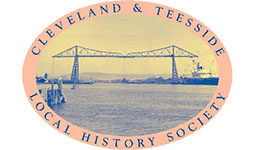In spite of the title, as Beryl Turner quickly explains, Matthew Wadeson was much more than just a lead and shipping agent. He was also a flax merchant, an auctioneer, a landowner and a yeoman. Above all he was a self-made man. He was baptised in Northallerton but spent his working life in Stockton, a town of rising business and trade in the 18th century. He first appears in trade directories as a Stockton flax merchant but in fact he had also been connected with the lead mines of Swaledale since the 1770s. As the author says, he was “well respected both for his integrity and for his knowledge of the mines.” With this background, it’s not surprising that he became a shipping agent. Much of this essay is based on two of Matthew Wadeson’s letters books running from 1792 to 1808 which were transcribed by Marie Hartley and Joan Ingilby. They reveal many of the problems which he faced in trying to run a successful business through fluctuations in the market price of lead, the effects of the Napoleonic Wars, thefts of lead and the difficulties facing river and coastal shipping in wintry weather.
As well as his business interests, Matthew Wadeson was a man who concerned himself with Stockton society in general. He was generous in his contributions to poor relief and in his efforts to resurrect the dispensary “for the sick poor of the town and neighbourhood”. Being a man whose career was significantly reliant on the safety of coastal shipping, it’s hardly surprising that he was actively involved in raising the “Loyal Stockton Volunteer Infantry” as part of a movement aimed at guarding England’s coasts from a possible invasion from Napoleon’s France. Wadeson’s Letter Books contain a letter from a Whitby gentleman referring to a Whitby ship that was captured on a voyage to London in 1799. Away from business, part of this essay is devoted to Matthew Wadeson’s friends and family and to his active involvement in the Stockton Freemasons from 1786 to 1822. He became a Worshipful Master of the freemasons.
In 1813 Matthew Wadeson became one of the Commissioners for the Pier and Port of Hartlepool who were working to restore the old harbour there, but he is probably better known for involvement in improving transport in and around Stockton. In 1802 he was a member of the committee appointed to investigate Edmund Harvey’s plan to improve the navigation of the River Tees. This was to dig a channel or cut through one or more of the long meandering loops between Stockton and the North Sea. When the Tees Navigation Company was formed in 1808, Matthew Wadeson was one of the shareholders. The first cut, the Mandale Cut, was opened two years later. Mr. Wadeson had a direct interest in the scheme, being one of the owners of the land adjacent to part of the new cut. Having been involved in the navigation improvement scheme almost from the start, we might have expected him to be one of the first consider the possibility of a railway to Stockton, and indeed he was. He was among the merchants, noblemen and “gentlemen” who attended the first meeting in Darlington Town Hall in 1818 where it was decided to press ahead with a new link between the two towns. The question remained whether a canal would be better, or a railway. Mr. Wadeson attended a second meeting in Darlington where the momentous decision to opt for a railway was taken and in 1821 he was one of the subscribers to the Stockton and Darlington Railway Company. It seems very likely that he was present at the opening of the railway in 1825.
Beryl Turner includes several examples of correspondence between Matthew Wadeson and William Atley of Whitby. She also includes details of his property as advertised prior to auction after his death. Close by the banks of the River Tees in Stockton he owned several dwelling houses, granaries and warehouses, along with the Mason’s Lodge and a river wharf. He also owned an estate called St. Ann’s Hill, with a “very neat and commodious dwelling house occupied by Mr. Wadeson up to the Time of his Death, with Excellent Gardens and Pleasure Grounds, which contain upwards of an Acre of Land, and are ornamentally as well as usefully laid out” . . . Matthew Wadeson died in 1833 at the age of 84 after a busy life which saw him involved in some of the most momentous developments in Stockton’s history.
